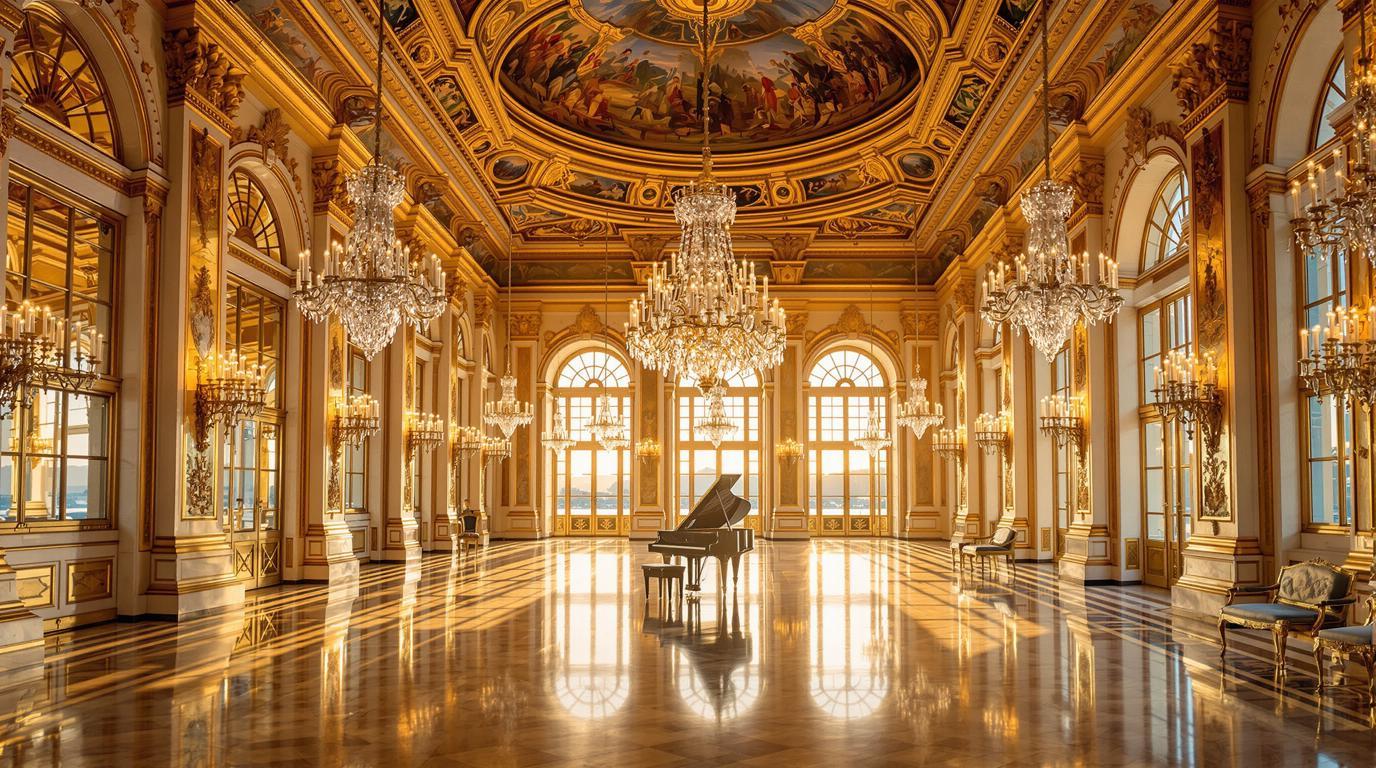Vienna’s imperial splendor hits you the moment you step into its historic center. This isn’t just another European capital – it’s the former throne of the Habsburg dynasty, where Mozart composed masterpieces and Freud developed psychoanalysis. While tourists flock to the obvious landmarks, Vienna’s true magic lies in the harmonious blend of majestic palaces and a classical music tradition that continues to reverberate through its streets.
The Habsburg legacy: More than just royal residences
The Hofburg Palace complex spans over 240,000 square meters and encompasses 18 wings, 19 courtyards, and 2,600 rooms. This colossal imperial headquarters wasn’t built in a day – it evolved over seven centuries as each Habsburg ruler added their architectural vision. Today, you can wander through the Imperial Apartments, marvel at the Spanish Riding School, and explore the Sisi Museum dedicated to the beloved Empress Elisabeth.
Schönbrunn: Where Mozart gave his first royal performance
The summer palace of Schönbrunn rivals Versailles in grandeur, with its 1,441 rooms and sprawling gardens. What many visitors don’t realize is that it was here, in the Mirror Room, where a six-year-old Wolfgang Amadeus Mozart performed for Empress Maria Theresa in 1762, beginning his lifelong connection to Vienna.
“When I sit at the grand piano in Vienna’s concert halls, I feel the ghosts of Mozart, Beethoven, and Schubert listening over my shoulder,” says Markus Schirmer, renowned Austrian pianist.
Vienna’s musical heartbeat: Beyond the famous composers
Vienna’s musical legacy extends far beyond the famous composers who called it home. The city hosts over 15,000 music events annually, ranging from grand operas to intimate chamber music performances. For just €3-10, you can enjoy standing-room tickets at the Vienna State Opera – a tradition embraced by locals and travelers seeking authentic cultural experiences.
Coffee culture: Vienna’s unofficial religion
Vienna’s coffeehouses aren’t just places to drink coffee – they’re institutions where time seems to stand still. At Café Central, where Trotsky and Freud once debated philosophy, the marble tables and vaulted ceilings transport you to another era. Order a Melange (similar to a cappuccino) and an Apfelstrudel, then linger for hours like seafaring travelers enjoying shore leave in a historic port.
The Spanish Riding School: 450 years of equestrian artistry
Few realize that the Spanish Riding School represents Europe’s oldest surviving horse-breeding institution. The Lipizzaner stallions perform intricate ballet-like movements in a baroque arena dating from 1735. Attend a morning exercise session for €16 instead of paying €75 for a full performance – you’ll see the same magnificent horses with smaller crowds.
Vienna’s secret gardens: Green escapes from urban splendor
Beyond the famous Belvedere and Schönbrunn gardens lies the Burggarten, a former private imperial retreat now open to the public. Here, locals gather around Mozart’s statue during summer months, often enjoying impromptu string quartet performances. It’s an atmospheric escape that feels worlds away from the tropical hideaways that attract most luxury travelers.
“Vienna teaches us that true elegance needs no explanation – it simply exists in the spaces between notes, in the architecture, and in our appreciation of beauty for its own sake,” notes cultural historian Elisabeth Müller.
Musical pilgrimage: The final resting places of musical giants
The Central Cemetery (Zentralfriedhof) houses the graves of Beethoven, Schubert, Brahms, and Johann Strauss II in a special “Musicians’ Corner.” Standing before these modest headstones offers a powerful moment of reflection on the mortal lives behind immortal compositions. Visit at dusk when the atmosphere turns as mysterious as a remote island sanctuary.
The Third Man Tour: Exploring post-war Vienna’s shadowy side
Film buffs can tour the underground sewer system made famous in the 1949 film noir classic “The Third Man.” The echoing footsteps through dimly lit tunnels offer a thrilling contrast to Vienna’s imperial grandeur above ground. Unlike stargazing from a mountain dome, this subterranean adventure reveals the city’s darker historical chapter.
Walking through Vienna feels like traveling through multiple eras simultaneously – imperial splendor alongside coffee-fueled intellectual revolutions, all set to a soundtrack of classical masterpieces. The city doesn’t just preserve its past; it continually reinterprets it, inviting today’s visitors to find their own harmonious place within its ongoing cultural symphony.
